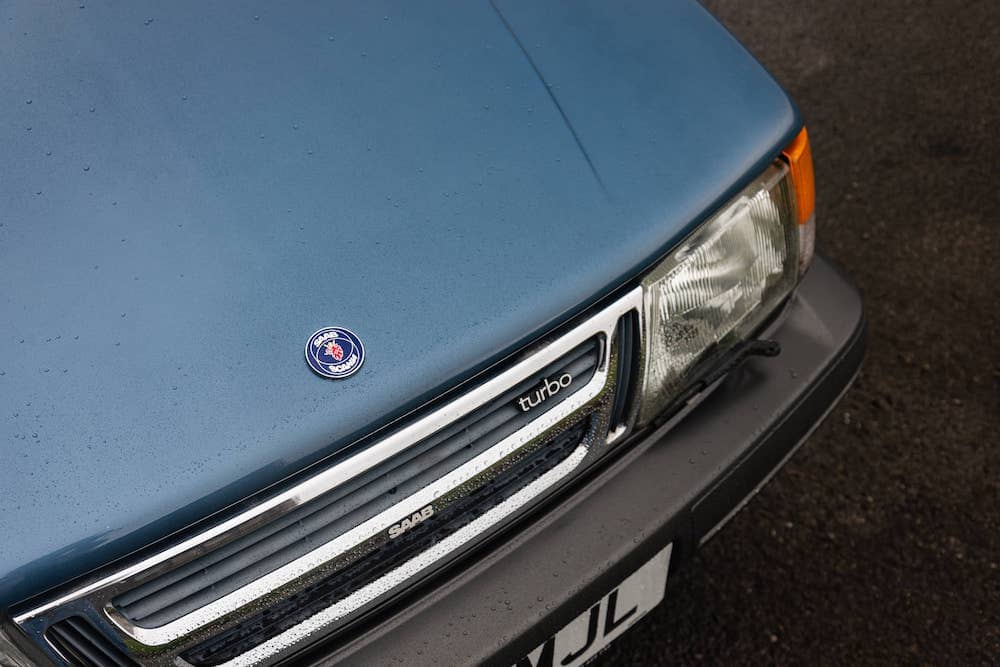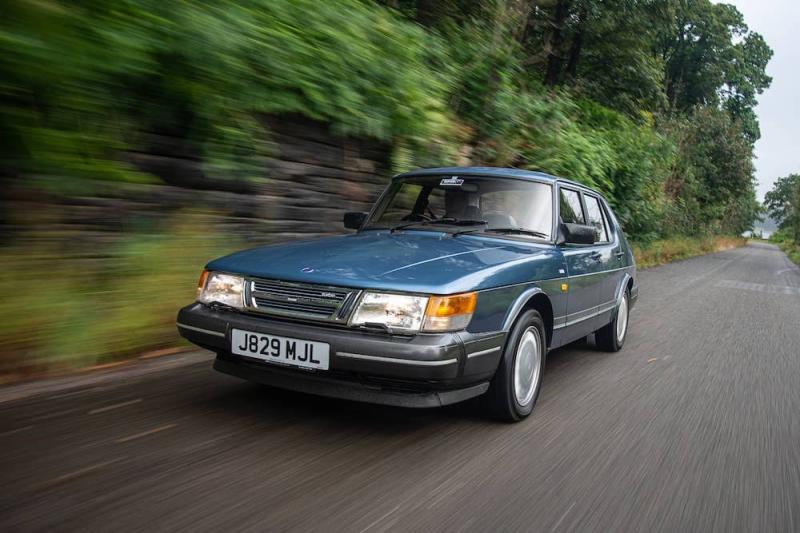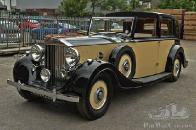SAAB 900 Should Be All The Classic Car You Ever Want or Need
By: Zak Mattin

SAAB 900 Should Be All The Classic Car You Ever Want or Need
Despite stopping making cars in 2011, SAABs are some of the most sought-after cars in the classic car world and the classic pre-GM era 900 Turbo is widely-considered to be Trollhattan's finest hour… we drove one to find out why for ourselves!

Liberium Photography
If you read our last edition of This Week in Cars, then you will know that this week I promised you a feature about why the classic SAAB 900 is all the classic car you will ever want or need. Guess what?! Here it is.
But before we get into the reasons behind what's a pretty bold statement, I would like to give a little more focus to the specific car we drove from Buxton in Britain's scenic Peak District, to the industrial backdrop of Castlefield in Manchester.
Kindly lent to Dyler by Zak Mattin of IGM Pedigree Motors in Macclesfield, the car you see here is a 1992, four-door, 2.0-litre SAAB 900 Turbo sedan. Under the clamshell bonnet is a 2.0-litre, four-cylinder motor, which produces a healthy 160bhp.
This particular car is also one of the few slant-nosed 900 Turbo sedans in the United Kingdom. After SAAB facelifted the car in 1987, the 900 Turbo sedan was no longer sold in the UK, and J829 MJL wound up on British shores after being imported from Japan; one of a handful of markets in which SAAB continued to sell the model until it took the classic 900 out of production in 1994.

The SAAB Rock Bay dealership in Buxton, Derbyshire, UK © Liberium Photography
SAAB began making the classic 900 in 1978, and throughout its 16-year lifespan, a total of over 900,000 of them were made. Around 271k of these increasingly-sought after four-door cars rolled off SAAB's various production lines across Sweden, and less than half of these were produced at SAAB's original plant in SAAB's hometown - the industrial city of Trollhattan.
The day with this imperfectly perfect car was originally intended to be a quick photoshoot at the former SAAB Rock Bay Motorbodies dealership in Buxton, then back home in time for tea. But as conversations developed with the owner, things quickly progressed into a SAAB-based pilgrimage to former SAAB showrooms in and around Cheshire and Greater Manchester.
The 32 mile-round journey began at the Rock Bay site (now Marriott Auto Services), and wound down through the picturesque Peak District to Anderson's SAAB, the former Stockport dealership. It seemed appropriate to wrap things up at the now-demolished ex-SAAB Manchester showroom just outside of Castlefield, given that SAAB Manchester was once the title sponsor of Manchester City.

The classic SAAB 900 Turbo in the repair shop at the former Rock Bay SAAB dealership - now Marriott Auto Services - in Buxton © Liberium Photography
Yet choosing Manchester as the location to enjoy a car that's considered to be Trollhattan's greatest hit wasn't just because it's the closest city to where I live. Neither was it to do with the fact the SAAB name was proudly emblazoned across the kit of Manchester's superior football team. In fact, there's quite a bit more to the decision than those two things…
You probably know this already, but Manchester nowadays is recognized largely for its contributions to contemporary music and nightlife. However, the influence that the rainy city of 553k souls has on the world runs significantly deeper than The Hacienda and the Brothers Gallagher.
Manchester is responsible for the computer thanks to one of the University of Manchester's most influential alumni; Alan Turing, who is also considered to be the father of modern day computer science and programming. Turing's sheer brilliance played a significant role in the Allied victory of World War II. Perhaps more astonishingly, he was single-handedly responsible for cracking Nazi Germany's engima code at Bletchley Park.

Today, the former Anderson's SAAB dealership in Stockport doubles up as both a used car dealership and a carpet warehouse © Liberium Photography
Wind the clock back to the start of the 19th century, and Manchester's thriving cotton industry during the Industrial Revolution put it on the global map as the world's first 'Industrial City'.
The city's growth as a Cottonopolis made it the envy of industrialists globally. Its layout and innovative use of canals went on to be copied by city planners behind other textile cities including od in Poland, Donetsk in Ukraine, and Ivanovo in Russia.

The former SAAB Manchester dealership was demolished after the Swedish carmaker shut its doors, and is now a storage space © Liberium Photography
This is all well and good you may ask, but what does this have to do with Trollhattan, the birthplace of SAAB?
Well, not only is Trollhattan an industrial city with questionable weather, it - and most importantly, SAAB - is responsible for proving a bunch of world firsts for the automotive industry. Don't believe me? Let's take a list of some of the company's achievements below...
Heated seats? Those were a SAAB invention. What about being able to refuel your car with fuels differing in levels of octane? Trollhattan named this APC or 'Automatic Performance Control', but you can thank SAAB for being able to fill your car up without causing the engine to go bang. Collapsable steering wheels in the event of an accident? Also SAAB. Recyclable and self-repairing bumpers? Yep, you guessed it…

Throughout its lifetime, SAAB quietly went on to create a number of firsts for the automobile world such as self-repairing bumpers made of recyclable plastic © Liberium Photography
With the history lesson out of the way, I have my fingers' crossed that the initially obscure link between SAAB, Trollhattan, and Manchester is somewhat clearer now. The thing I hope the most though, is that the following story brings the magic of SAAB to life.
Initially I was skeptical, and it took me a while to understand why people love these quirky, odd-looking Swedish cars. Once I did though, there's absolutely nothing more than I want on my drive now.
These Seven Reasons Are Why The Classic SAAB 900 Should Be All The Classic Car You Ever Want or Need - Dyler
Reason #1 Why The Classic SAAB 900 Should Be All The Classic Car You Ever Want or Need: 'Born From Jets'

Designed towards driver focus, the classic SAAB 900's interior as a Bjorn Envall masterclass in ergonomics © Liberium Photography
During the company's later years, it was sometimes easy to chuckle at SAAB for their marketing material which portrayed their cars as airplanes for the road. The thing is, though, is that SAAB actually started life as Svenska Aeroplan AktieBolaget - an aerospace and defence company set up in Linkoping in 1937. Despite the sometimes tenuous links between SAAB Automobile and its air-faring counterpart, there was actually a connection between the cabin ergonomics of most of SAAB's cars and their aircraft. During the design process, the 900's Chief Designer, Bjorn Envall, wanted the car's cabin to be as driver focused as possible, and it is. When driving the 900, everything falls easy to hand as a driver, and there are no unnecessary distractions such as unwanted buttons, dials or screens. According to SAAB historian Lance Cole, all switches and dials have been purposely placed to fall within the eyeline and hand reach of the driver. The 900 also boasts a deeply curved, fighter jet-inspired windscreen to give the driver the best possible visibility. Like most other things on the car, it takes a little while to get used to, especially as it can play with your depth of vision. It does, however, work. A feature on the later GM-made 900, its successor the 9-3, and their larger sibling, the 9-5, was something called Night Panel. By pressing a dash-mounted button, the driver could switch off all of the cabin lights apart from the speedometer, which was back-lit with a restful green backlighting inspired by the same colour used in SAAB's aircraft. It may seem quirky, but a lot of what Trollhatten did in the name of driver focus and safety was left-field. Step back, think about it, and it doesn't seem such an odd thing to do, does it?
Reason #2 Why The Classic SAAB 900 Should Be All The Classic Car You Ever Want or Need: Impressive Aero When Launched; Still Impressive Aero Now

Just like everything built by SAAB, the classic 900 is heavily influenced by the company's expertise in aviation and aerodynamics © Liberium Photography
Envall set out for his creation to be "built to a target, not down to a budget" and no expense was spared when it came to developing the 900's distinctive shape; a shape designed massively with aerodynamics in mind. Its slippery design would then make the car as performance-orientated as possible without compromising on fuel efficiency. When SAAB launched the 900 in 1978, similar compact executive cars such as the Mercedes-Benz 190E, the BMW E30, and the Audi 80 were pretty slab sided. Once again drawing on its traditional aerodynamic efficiency (SAAB's first car, the 1947 SAAB 92 had a Cd of 0.30!) and its aviation heritage, the 900 launched with a drag coefficient 0.36 for the hatch, and 0.37 for the coupe. In 1987, the car received a facelift which tilted the front end back by 28-degrees and added smooth, curved, integrated bumper mouldings to give it a more rakish design. Once again, Cd dropped to 0.35. To put things into context, the Tesla Model S originally had a Cd of 0.24 and the similarly all-electric Mercedes-Benz EQS Cd is 0.20. For a design that's well over 40 years old, the Smart People of Trollhattan should be well and truly commended for their aero work on the 900 as there are still plenty of modern, mid-range, internal combustion engine-powered executive cars that would struggle to match their for dynamic prowess.
Reason #3 Why The Classic SAAB 900 Should Be All The Classic Car You Ever Want or Need: Turbocharged Slant Motor and The Clamshell Bonnet

This particular classic 900 is powered by the classic SAAB slant-mounted, turbocharged four-banger © Liberium Photography
SAAB wasn't the first carmaker to turbocharge its vehicles, but it was the leader when it came to bringing turbo power to the masses. With the SAAB 99 - the predecessor of the 900 - SAAB invented modern day turbocharging by adding a small Garrett T3 turbo to the simple, 2.0L four-cylinder motor it had sourced from Britain's Triumph. The turbo would spool up quickly and deliver power at a low RPM range, and when combined with SAAB's mechanical fuel injection system, the result was a smooth motor, which produced 135bhp at a time when the equivalent 2.0L BMW 3 Series made just 110bhp. The unusually-mounted 'slant' engine was essentially put in backwards; a move which created more room within the engine bay. Most importantly for SAAB's engineers, this configuration allowed them to mount the gearbox UNDERNEATH the engine. This unorthodox engineering solution ensured better weight distribution and better road holding, which was crucial given that all 900s were front-wheel drive. Oh, and I almost forgot - all of this is hidden under one of the most gloriously designed forward-opening clamshell bonnets you will ever see.
Reason #4 Why The Classic SAAB 900 Should Be All The Classic Car You Ever Want or Need: Unparalleled Levels Of Quality; Quirky Engineering

The classic SAAB 900 was "built to a target, not down to a budget" and it shows in how the car is engineered and built © Liberium Photography
Given Envall's "the sky's the limit" philosophy when it came to developing the classic SAAB 900, it should come as no surprise that everything inside is well screwed together. Each button, door, and lever moves with a satisfying Tonka toy-esque clunk, thud, or well-insulated click. I've already touched on a few of the car's aircraft-inspired engineering features, but I can't help but love the ignition switch, which is located down by the transmission. Understandably, this throws drivers during their first time with a SAAB and for some, will continue to do so. Love it or loathe it though, it was placed down there to ensure that the driver isn't stabbed in the leg with a flying key during an accident. Another engineering masterpiece is the 900's unusual double wishbone at the front, and a beam axle design with a Panhard rod at the rear. All of this left-field engineering led to outstanding handling and performance. In fact, Autosport magazine described the 900 as "just about the best motor car being made anywhere [in the world]." As you watch the needle on the turbo gauge sweep from the green, into the yellow, and ultimately into the red as the turbo fully spools up, it becomes pretty hard to disagree with that statement. If, however, anyone knows why the Ladies and Gentleman at SAAB decided to place the electric window switches down by the ignition on the 900 (and early 9-3 and 9-5 cars), then please do get in touch. That still remains a mystery.
Reason #5 Why The Classic SAAB 900 Should Be All The Classic Car You Ever Want or Need: SAAB No Longer Exists So They're A Treat To See In The Wild.

Despite being a mass-produced car, there are only just over 2,500 classic SAAB 900 cars remaining on British roads in 2021 © Liberium Photography
As we already discovered, some 900k classic SAAB 900s were manufactured during the car's lifetime, and despite being popular in the UK - especially convertible models - it is an almost-extinct bird these days. During the car's final year of production, 1994, around 64k classic 900s roamed UK roads. In the first quarter of 2021, it was reported that just 2.5k of them remained. Happily, most of them can be found in the hands of collectors who absolutely cherish theirs. Seeing any car made by SAAB out in the wild is a bit of an event as the company no longer exists, but the classic 900's dwindling numbers make it an extra special piece of #carspotting whilst out and about.
Reason #6 Why The Classic SAAB 900 Should Be All The Classic Car You Ever Want or Need: It's Scientifically Proven That Smarter People Drive SAABs - Honest!

SAAB people doing SAAB people things in the Peak District with this particular classic 900 © Liberium Photography
It's no secret that SAABs have long been associated with anti-fashionistas, oddballs, freethinkers, and more esoteric folk. In short, if you lust after an AMG Mercedes or a white Range Rover, the chances are pretty slim that you'll be particularly interested in owning a SAAB. However, the image of the black polo neck jumper-wearing intellectual SAAB driver is far from just a stereotype created by those who don't subscribe to 'SAABism' or The Trollhattan Way. A study showed that 85% of those who drove SAABs had graduated from university, and 50% of those were likely to have a postgraduate degree. According to a Dyler reader who graduated from Harvard University during the 1990s, the bulk of cars parked outside the nearby houses on the prestigious 'Professor's Row' were SAABs and Volvos. Given the COVID-19 pandemic and the resulting ban on flights from the UK to the US, we haven't been able to get over to Cambridge, Massachusetts, to verify things for ourselves. Be honest, though, it's not a difficult claim to believe, is it?
Reason #7 Why The Classic SAAB 900 Should Be All The Classic Car You Ever Want or Need: Ultimately, The Classic SAABs Is Just A Cool, Practical Thing...

Practical and fast, the classic SAAB 900 is a remarkable piece of intelligent engineering and all the classic car you will ever need © Liberium Photography
If you've read this far, you'll probably agree that any SAAB is a pretty cool classic car to own. SAAB did not conform to fashion or wider automotive trends, and this "inflexibility" is arguably one of the things that naysayers will cite as being a factor in eventually bringing the company eventually to its knees. Yet bringing on a Lewis Hamilton or a Victoria Beckham to consult on the design or engineering process as a way of turning a profit would have caused abject horror throughout the corridors of Trollhattan. For sticking to its principles throughout its 76 years of existence, SAAB went about its business by going its own way, and quietly managed to change the automotive world for the better in a quiet thoughtful way, in the same way they made thoughtful cars for thoughtful people. For this alone, SAAB must be applauded. What's more, SAABs are not expensive these days; at least not expensive in the way that much more mainstream, better-known classic cars are. Yet prices - especially for the classic 900s and the later 9-3 - are expected to rise given their increasing popularity amongst younger classic car enthusiasts. Whilst the 'Save SAAB' campaign of 2010 failed to save the company, you and I can do our bit by Saving a SAAB and keeping the Trollhattan dream alive.
Dyler would like to thank Liberium Photography for the images featured in this story, and to Isaac Mattin from IGM Pedigree Motors the loan of the SAAB 900 Turbo.
-
No politics, no religion, no instagrams, and commentary must be civil. The ToS and the CoC will be enforced, and anything that the administrator deems to be offensive will be deleted. YouTubes, videos and images that the administrator is unable to open must be described and explained or they will be deleted.






Although the author is British and the article is about the Saab 900 in England, if you can get through his describing the Saab dealerships that have closed down and his praise of Manchester the meat of this article is very much worth reading.
I have driven American cars mostly (some built in Canada), Japanese cars a lot, a French car a little, and a German car very little, and although I have owned other Swedish cars that were very good, the car that made the biggest impression on me was a car made in Sweden though I had it for only one day. Back about 40 years ago my then wife and I were to visit out son on visitors day at the summer camp he was at way up north of Toronto, and that was the only day that both my car and my wife's car had some problems, so I had to rent a car and the one I got was a Saab 900. It sure was a quirky looking vehicle but what the hell, who cares as long as it runs, and run it did, smoother, quieter than any car I had ever driven - to describe the feeling I'm going to quote a line spoken by Prince Andre (Mel Ferrer) in War and Peace about dancing with Natasha (Audrey Hepburn)
Driving that car was the same kind of feeling - it felt like flying , the handling of the car, the steering, the smooth acceleration up and down the hills, notwithstanding the curvy hilly roads up north that looked like this:
To get there was a three hour trip and when we got there we felt as relaxed and alert as when we started out - I could have driven another 3 hours without stopping to rest.
Has anyone else ever driven a Saab 900? I'd be curious to know what their feelings about the car might be.
I've never driven one or thought of them as a ''classic car'' after reading the article and the ''firsts'' I'd love to drive one and have time to poke and prod one.
Sure learned something new today, great article.
What it shares with BMW is that both companies had been making airplanes before they started making cars.
I have never driven a Saab but I once saw somebody put a full sized refrigerator in one.
Amazing.
Only SAAB I have ever driven was a SAAB Sonnet and I thoroughly enjoyed it. Had a good friend that owned a SAAB 900 and he really liked it.
The Swedes certainly built great cars.